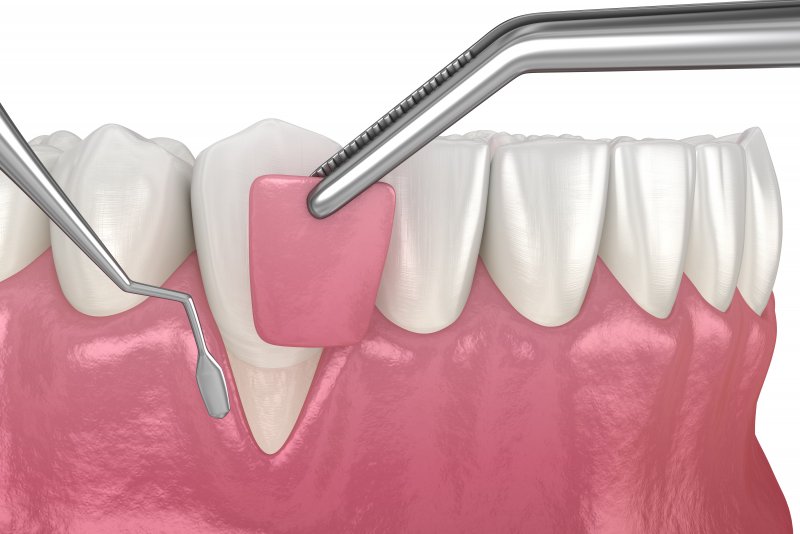
Gum disease therapy comes in many forms. When bacteria and plaque cause the soft oral tissues to recede, it not only raises the risk of tooth sensitivity and other serious problems, but it also negatively impacts a person’s smile aesthetics. Fortunately, there is a solution that is designed to improve oral health and facial appearance. Read on to learn how a gum graft can be a safe and effective solution for treating gum recession.
How Periodontal Disease Leads to Gum Recession
Gum disease is a common oral health problem that affects millions of people in the U.S. When bacteria and plaque begin to attack the tissues surrounding your teeth, they will become red, inflamed, and possibly bleed after brushing or flossing. If left untreated, the infection can spread to form gum pockets and begin damaging teeth and the jawbone.
As this happens, you may begin to notice that your gums will slowly recede or “pull away” to reveal more of the natural tooth structure. This can be a serious problem as more of your tooth root will be exposed, increasing your risk for teeth sensitivity and worsening infection.
The Benefits of a Gum Graft
When seeking treatment for periodontal disease, you may discover other non-surgical forms of care, such as scaling and root planing and antibiotic therapy. However, when the gums begin to recede, the only way to better protect your teeth and their roots is to undergo a gum graft.
Although it may sound a bit daunting, the truth is this procedure is safe, highly effective, and is quick to recover from. Your periodontist will remove a small flap of tissue from the roof of your mouth and transfer it over to the area of your gums that is receding. With this unique procedure, you can safeguard your teeth and reduce the potential for more serious issues in the future.
What to Expect After a Gum Graft
The best part is that a gum graft only requires one appointment, and you can expect to be back on your feet and feeling like your normal self within about one week.
Once you arrive home from your surgery, you’ll e required to follow the guidelines provided to you by your dentist. This will include everything from your oral hygiene habits to your diet and medications. You’ll need to avoid cleaning your surgical site until it is fully healed and rinsing with an antibacterial mouthwash is essential in helping quicken the healing process. You should also only eat soft foods and avoid engaging in strenuous physical activity.
Don’t continue to avoid treatment for your gum disease. With the help of a gum graft, you can feel confident your soft oral tissues will be back in their rightful place.
About the Author
Dr. Rob Wood is a board-certified periodontist in Salt Lake City who goes above and beyond to deliver long-lasting results. Earning his dental degree from Temple University Kornberg School of Dentistry, he completed his specialty training in periodontics at the University of Texas. Offering an array of treatment options to patients suffering from periodontal disease, he and his team at Utah Implants & Periodontics are here to ensure the health and future of every person’s smile. If your gums are receding and you need professional help, contact us at (801) 322-5032.
